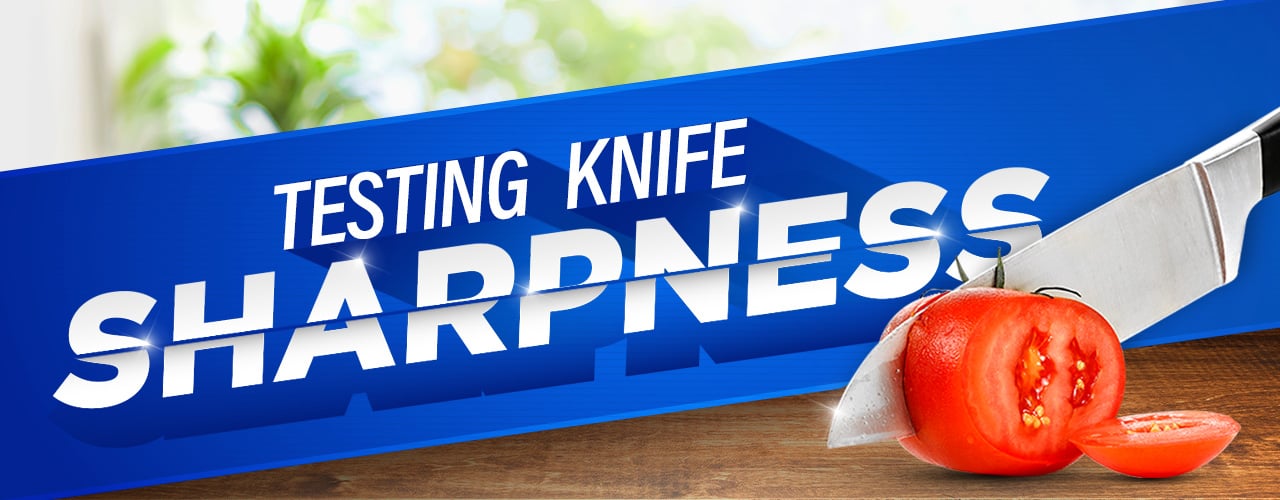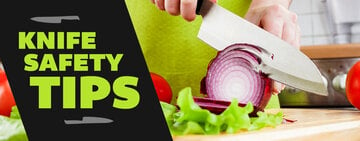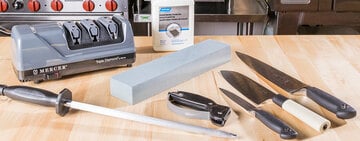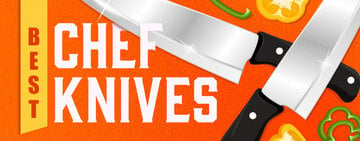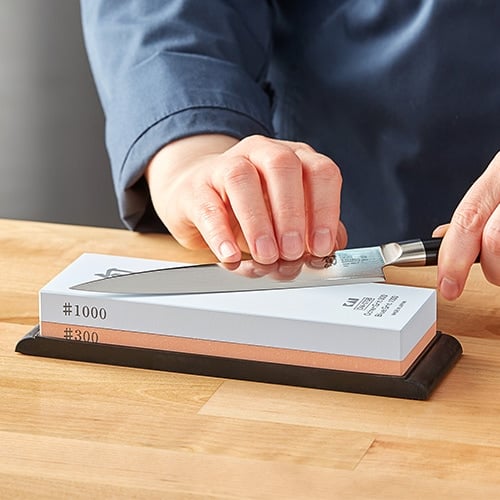
It may seem hard to believe, but keeping your knife as sharp as possible is actually safer to work with than a dull knife. But after sharpening your knife on a whetstone, how can you make sure it’s sharp enough to use safely? Below, we listed the best and safest knife sharpness tests.
Shop All Knife SharpenersSome people suggest using different body areas to test knife sharpness, such as cutting your arm hair, indenting your fingernails, and even using your tongue. We do not recommend using your body to test knife sharpness. There are many different ways to test knife sharpness that are safer and do not include potentially harming oneself.
How to Test a Knife for Sharpness
Watch our video below on how to test knife sharpness:
Different Types of Knife Sharpness Test
After you've sharpened your knife, there are four different tests you can perform to make sure you were successful at honing the blade. Why test out your blade before cutting? It's good practice to test your blade so that your cuts are smooth and clean. Keep reading to learn how to use our easy knife sharpness tests:
1. The Paper Test
- Hold the paper by a corner with your non-dominant hand, keeping the paper parallel to you.
- With the handle near your body and the point of the knife facing away from you, place the edge of the blade at the top middle of the paper.
- Slowly pull the knife down the length of the paper until you cut through it.
- If your cut is jagged and uneven, your knife is not sharp.
- If your knife makes a clean cut all the way down, then your knife is properly sharpened.
2. The Tomato Test
This knife sharpness test uses a tomato (or onion!) as the object to cut through. The goal is to cut the thinnest and cleanest slice from the tomato without holding onto the tomato or applying much pressure with your knife. Try this easy sharpness test on a tomato:
- Cut one end of the tomato off and rest it on a cutting board.
- With your knife in your dominant hand, hold the knife perpendicular to the cutting board.
- Gently slide the blade against the very top of the tomato from tip to base.
- If the knife makes a clean, straight, thin cut without needing much pressure to cut through, then your knife is properly sharpened.
- If your knife has trouble cutting into the tomato, gets stuck during the cut, or creates a jagged cut, then you need to sharpen your knife.
3. The Visual Inspection
- Look down the blade and rotate the knife from side to side to inspect the edge of the blade for dull marks.
- Find any indications for light reflection. If the top of the blade is bent in any spots, it will reflect light and your knife needs sharpening.
- Now check for nicks and chips by holding the knife on its side so it’s horizontal and check the tip to see if it is flattened or chipped off.
- If you see any imperfections, your knife needs further sharpening.
4. Detecting Burrs
As you sharpen a knife, the blade bends slightly to create a burr. This is a natural part of the process and the reason why you should always hone the knife after sharpening. Honing the knife removes the burrs so the knife edge is clean and sharp. Follow these simple steps to detect and remove burrs from your chef knife:
- After sharpening on your whetstone, gently place your finger on the flat side of the blade near the spine of the knife. Slowly glide your finger from the spine to the sharp edge of the blade and feel for any rough edges.
- If you feel a rough edge, that indicates that you have created a burr on that side of your knife's edge, meaning you’ve made one side the sharpest it can be.
- Flip the knife to the other edge and begin sharpening that side’s edge, detecting burrs on that side as well.
- Hone the burr off and you are ready to use your knife.
How to Keep a Knife Sharp
After all of the hard work of sharpening your knife and testing its sharpness, you’ll want to maintain that super sharp edge for as long as possible. Follow our tips below on how to keep your knife sharp:
- Use a Honing Rod- A honing rod, also known as a sharpening steel, does not physically sharpen a knife, rather it straightens out the knife’s blade. Re-aligning the blade helps maintain the blade over the course of time. Get into the practice of honing your knife every time before using it.
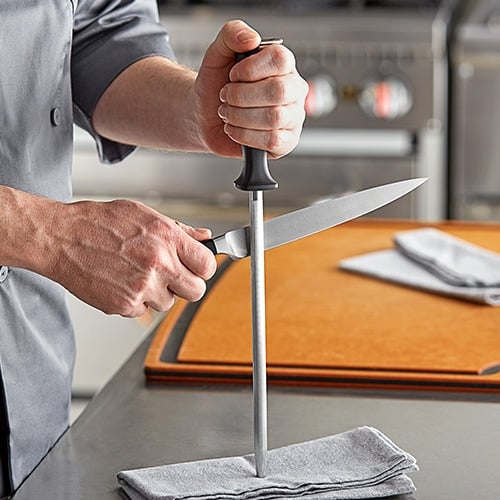
- Wash Knives by Hand - In other words, never put your knife in the dishwasher. The excess time with detergent and hot water dulls the blade. Instead, carefully wash your knives by hand.
- Thoroughly Dry Your Knives - After you handwash your knife, you need to thoroughly dry your knife with a clean towel. Removing all drops of water prevents rust from forming on your knife.
- Use a Proper Cutting Board - Always use a cutting board when making knife cuts. The cutting board should be made out of wood, plastic, or polyethylene. Never use granite or stainless steel as your base for knife cuts.
- Correctly Store Knives - Designate a dedicated knife storage area in your kitchen. Whether it’s a knife drawer, wooden block, or magnetic block, your knives should be stored properly to not dull the blade.
It may not be the first thought in your mind before beginning a recipe, but a sharp knife is imperative for making beautiful knife cuts and working quickly in the kitchen. Ensure you’re maintaining your knife’s edge by trying out one of these knife sharpness tests!
